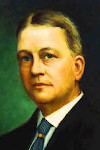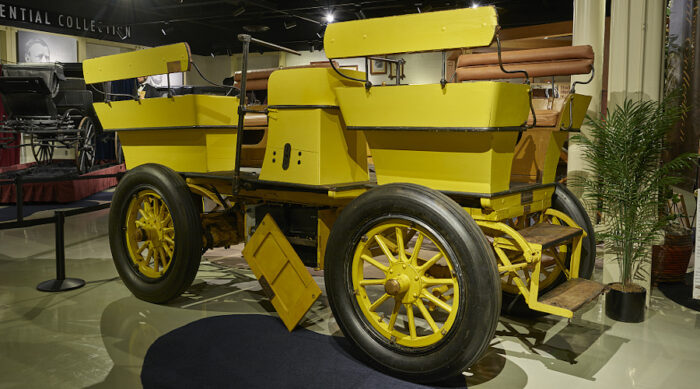
A few weeks ago, I wrote about a newlywed couple who spent their honeymoon taking the car that shuttled senators between their office building and the Capitol back and forth 15 times. I wanted to add a link to an article that I had written about this mode of transportation, only to realize that I had never actually written it. So, today we address that oversight.
When the Senate Office Building (today the Russell Building) was built back in 1909, a tunnel was built to connect the Capitol with the new offices. Since going from one building to the other required being outside for all of 600 feet, the powers that be decided to build a tunnel to protect Senators from the inclement weather. Furthermore, since this distance was too great to be covered on foot, a mode of conveyance was to be added, in contrast to the presumably more active Representatives, who were not afforded this luxury.
Elliott Woods, architect of the Capitol and pictured at left, looked at a couple of options, including a streamlined monorail and moving sidewalks, but price considerations caused him to go with a simpler solution: a car—fortunately, for all involved, an electric car. Built by the Studebaker Brothers Manufacturing Company, it was based on other products they had made over the previous seven years. While the drive train was the same as for other vehicles, the body was quite different. The driver had two seats, next to each other and just a bit off of the midpoint of the car. The two seats faced in opposite directions. At each corner of the car, and facing the center, were two benches, large enough to fit three passengers each on one end, and two on the other. In order to speed up the whole process, the car was not turned around at the end of its journey; instead the chauffeur would simply switch to the other seat to begin the next trip. It took about 40 seconds to get from the Capitol to the Senate Office Building; about a minute and 20 seconds for the return journey. The reason for this discrepancy was two-fold: The tunnel was sloped from the Capitol to the Office Building, and the car was, essentially, backing up on that leg, which made it more difficult for the driver to steer.

The magazine Motor Age published a long article on this new vehicle on March 25, 1909. They included this little tidbit:
The bodies of the cars are finished in tan color and upholstered with brown leather, a color scheme that is in harmony with the plastered walls of the tunnel. Benjamin Cohen, the head chauffeur at the capitol, has had considerable experience at the Studebaker factory and is thoroughly conversant with all the technical details of the machines, so that it is expected that any ordinary repairs can be made with a minimum of delay and no inconvenience to the passengers.
In spite of the enthusiasm for the system, and its use by everyone from the vice president to visiting newlyweds ,Peg and Tommy—as the two cars were dubbed— were taken out of service in 1915, three years after the Studebaker company got out of the electric car business. The cars would remain in the basement of the Senate office building until 1939, when they were sold off for $35, a steep discount over the $2,400 (70,000 in today’s dollars) they had cost each when bought in 1909.
More on their replacements next week
